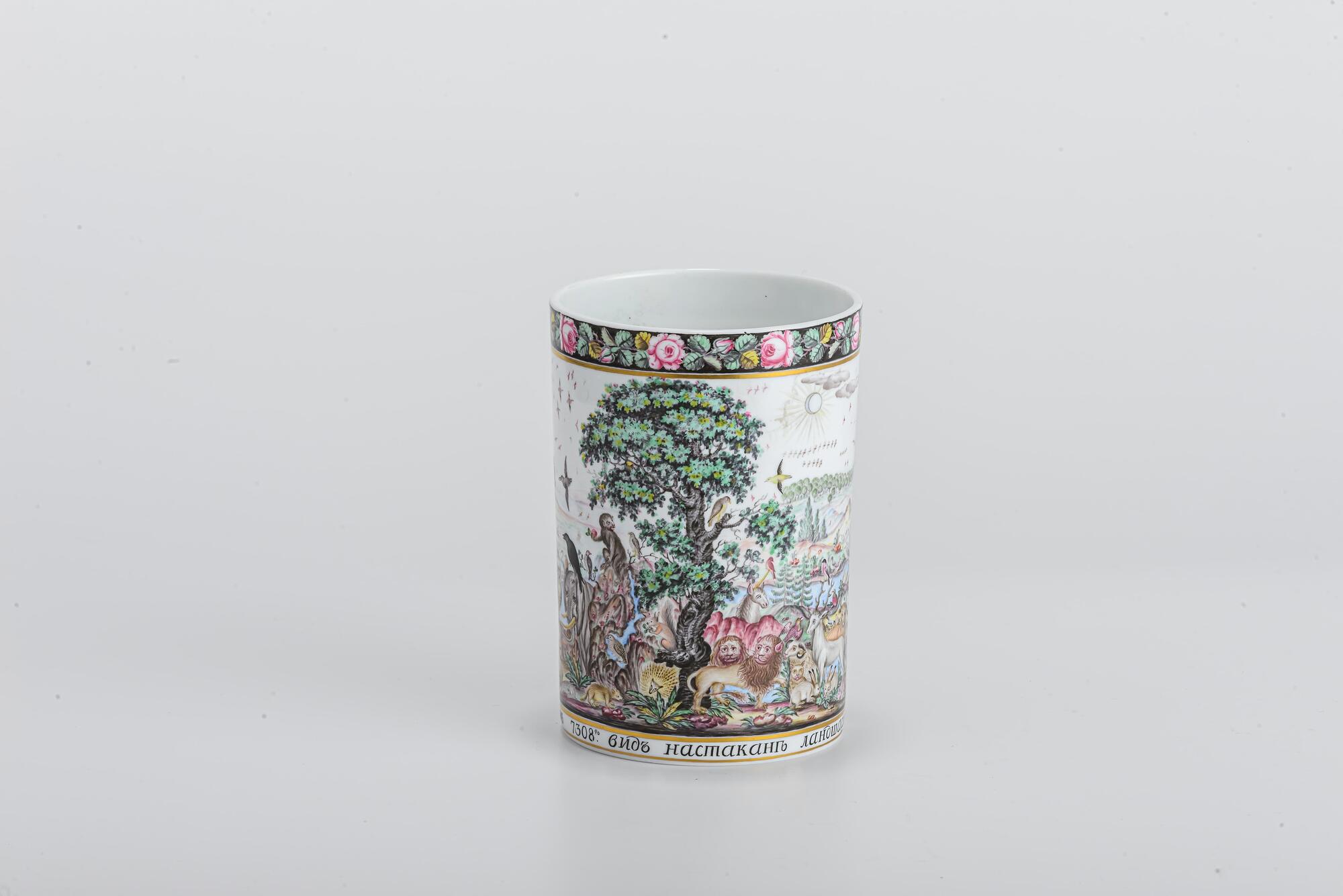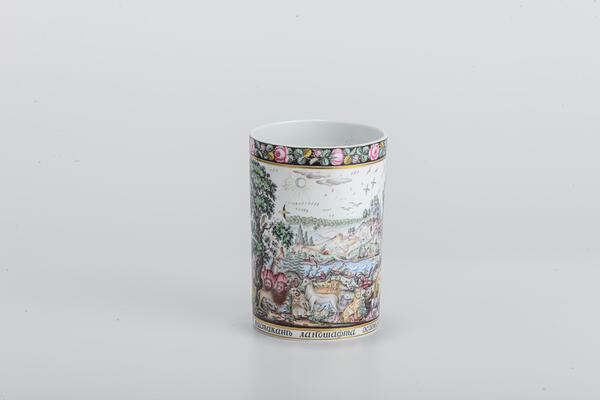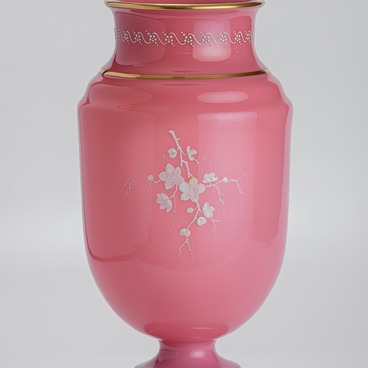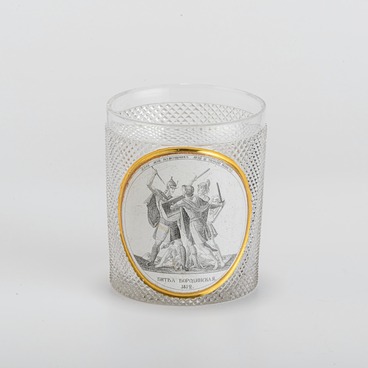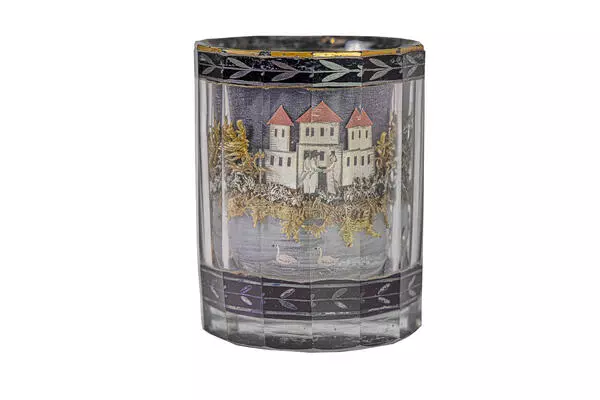This glass called “The Creation of the World” is a permanent exhibit of the Museum of Glass and Crystal in Nikolsk. The item is made from milk glass.
It was produced at the Nikolsko-Bakhmetevsky factory in 1800. It was most likely Alexander Petrovich Vershinin who decorated the artwork with painting. The glass was called after the inscription around its base, which read as follows: “view on the glass of a landscape of creating the world in the year of 7308 according to Greek chronographers.”
The glass is painted with polychrome decoration and features the Garden of Eden in its perfect harmony. Following the Genesis creation narrative, the artist depicted everything that God had created in six days: the sky with the sun and the moon shining, the earth full of flowers, a river, herbs and trees. Fish frolic in the water and birds fly in the sky, goats and monkeys, lions and squirrels, elephants and rabbits live in peace with one another. Adam and Eve are depicted twice: resting on the hill and working — Adam plowing the soil, and Eve spinning.
The artist used a white background to celebrate all the variety of creation. The panoramic view of the scene enables to depict the landscape beyond the foreground.
White (milk) glass was known back in ancient Egypt and Mesopotamia — artisans applied glass threads to decorate their products. During the 17th and 18th centuries, white glass was used to imitate porcelain, a rare and valuable material.
Russian glass factories, including the Bakhmetevsky one, started producing milk glass in the 18th century. Glass blowers added bone meal to the dye to make the raw material look milky white and less transparent. Such glass was well suited for painting and could be decorated with monochrome or polychrome images of varying difficulty. This technique is called cold painting and belongs to the so-called “cold” methods of decorating glassware.
After painting, glass was necessarily fired to make the image more durable. The Bakhmetevsky factory was famous for its painted glassware almost throughout its entire existence since the 18th century. In Nikolsk, some artisans still decorate their products with painting thus keeping the long-standing traditions of the old masters alive.
It was produced at the Nikolsko-Bakhmetevsky factory in 1800. It was most likely Alexander Petrovich Vershinin who decorated the artwork with painting. The glass was called after the inscription around its base, which read as follows: “view on the glass of a landscape of creating the world in the year of 7308 according to Greek chronographers.”
The glass is painted with polychrome decoration and features the Garden of Eden in its perfect harmony. Following the Genesis creation narrative, the artist depicted everything that God had created in six days: the sky with the sun and the moon shining, the earth full of flowers, a river, herbs and trees. Fish frolic in the water and birds fly in the sky, goats and monkeys, lions and squirrels, elephants and rabbits live in peace with one another. Adam and Eve are depicted twice: resting on the hill and working — Adam plowing the soil, and Eve spinning.
The artist used a white background to celebrate all the variety of creation. The panoramic view of the scene enables to depict the landscape beyond the foreground.
White (milk) glass was known back in ancient Egypt and Mesopotamia — artisans applied glass threads to decorate their products. During the 17th and 18th centuries, white glass was used to imitate porcelain, a rare and valuable material.
Russian glass factories, including the Bakhmetevsky one, started producing milk glass in the 18th century. Glass blowers added bone meal to the dye to make the raw material look milky white and less transparent. Such glass was well suited for painting and could be decorated with monochrome or polychrome images of varying difficulty. This technique is called cold painting and belongs to the so-called “cold” methods of decorating glassware.
After painting, glass was necessarily fired to make the image more durable. The Bakhmetevsky factory was famous for its painted glassware almost throughout its entire existence since the 18th century. In Nikolsk, some artisans still decorate their products with painting thus keeping the long-standing traditions of the old masters alive.
